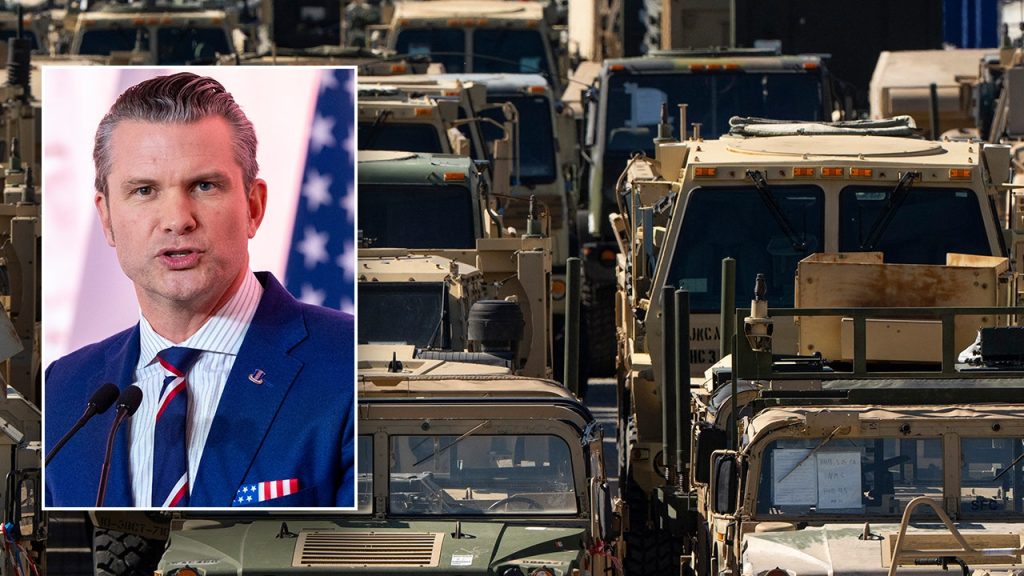The U.S. Army is reportedly contemplating a significant reduction of its active-duty forces, potentially cutting up to 90,000 troops. This restructuring, which aims to reduce the number of soldiers to between 360,000 and 420,000, aligns with a broader effort by Defense Secretary Pete Hegseth to streamline military spending and transition to a more technologically advanced army. The potential cuts come amid a shift in military focus from European issues and counterterrorism toward the emerging challenges posed by China, raising concerns about the Army’s ability to retain skilled personnel and maintain combat readiness.
| Article Subheadings |
|---|
| 1) Potential Reductions in Army Troop Levels |
| 2) The Strategic Shift in Military Focus |
| 3) Implications for Personnel Retention |
| 4) Previous Cuts and Current Recruitment Goals |
| 5) Conclusion: The Future of the U.S. Army |
Potential Reductions in Army Troop Levels
Current discussions among Army officials indicate a plan to potentially reduce active-duty troop levels significantly. Reports suggest that the total could dip from 450,000 to between 360,000 and 420,000 soldiers. This reduction may be part of a larger strategy to create a ‘leaner and more lethal’ military force that is better resourced and equipped for future conflicts, particularly in the Indo-Pacific region. Defense Secretary Pete Hegseth has emphasized a vision for a high-tech army, which invariably requires fewer personnel but demands higher technological prowess and combat readiness.
The Strategic Shift in Military Focus
The proposed troop reductions coincide with a broader strategic realignment within the U.S. military. As international dynamics evolve, particularly with the rise of China as a predominant global challenge, military leaders are advocating for a pivot away from traditional European-centric missions, including counterterrorism. This shift was underscored by Secretary of State Marco Rubio, who has called for increased NATO funding by European allies, reflecting a recognition that European nations must contribute more substantially to their own defense. The reduction of troop levels is, therefore, a deliberate step toward optimizing the Army for a rapidly changing global landscape.
Implications for Personnel Retention
The proposed cuts raise serious concerns about the U.S. Army’s ability to retain skilled personnel, which is critical in a time when the military faces numerous challenges in recruitment and retention. Sources within the Army have stressed the importance of retaining talented soldiers, cautioning that without a clear retention strategy, the organization risks losing valuable members who might seek opportunities elsewhere. This sentiment underscores the potential pitfalls of reducing troop numbers without adequately addressing the underlying factors that drive personnel satisfaction and commitment.
Previous Cuts and Current Recruitment Goals
Historically, the U.S. Army has already implemented reductions in its ranks, such as cutting approximately 24,000 positions related to counterterrorism in the previous year, roles that were primarily unfilled. Despite the challenges posed by recruitment setbacks in recent years, the Army successfully achieved its enlistment target of 55,000 new soldiers by the end of the last fiscal year in September. This demonstrates resilience but also highlights the continuous need to adapt recruitment strategies to ensure the Army remains adequately staffed amid proposed cuts.
Conclusion: The Future of the U.S. Army
The potential reduction of up to 90,000 active-duty troops represents a profound change in the structure and operational capabilities of the U.S. Army. As the military transitions to prioritize technology and modern warfare competencies over sheer numbers, the implications for personnel management, recruitment, and strategic readiness are paramount. Leaders within the Army are tasked with ensuring that these cuts do not compromise combat effectiveness and that a robust recruitment strategy is in place to support the military’s future objectives.
| No. | Key Points |
|---|---|
| 1 | The U.S. Army may cut up to 90,000 active-duty troops. |
| 2 | The proposed cuts align with a strategic shift in military focus towards high-tech capabilities. |
| 3 | Concerns are growing regarding personnel retention amidst the planned reductions. |
| 4 | The Army successfully met its recruitment goals despite recent cuts. |
| 5 | Overall implications of cuts include potential challenges in maintaining combat readiness. |
Summary
As the U.S. Army considers substantial troop reductions, the strategic implications are significant. Transitioning to a more technologically advanced military force may optimize efficiencies but risks losing valuable personnel. Balancing these changes while fulfilling defense commitments is a delicate task for military leadership, requiring careful planning and execution to maintain the effectiveness of U.S. armed forces in a rapidly evolving global environment.
Frequently Asked Questions
Question: Why is the U.S. Army considering troop cuts?
The U.S. Army is contemplating troop cuts to transition towards a leaner, more high-tech force better suited for future conflicts, particularly in the context of rising challenges from countries such as China.
Question: How might personnel retention be affected by the proposed cuts?
The proposed troop reductions could negatively impact personnel retention, as skilled soldiers may leave for other opportunities if the Army does not implement a clear retention strategy to keep them engaged and satisfied.
Question: What are the potential consequences of the Army’s shift in focus?
Shifting focus away from traditional missions could lead to enhanced capabilities against emerging threats, but it may also challenge the Army’s ability to maintain traditional commitments, such as supporting NATO and responding to crises in Europe.


